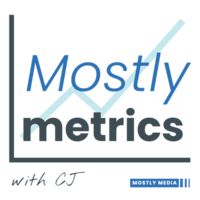Mostly metrics

Source: Rubrik Quarterly Earnings
Feature Story
The FORECASTING SCIENCE BEHIND GROWING TO +$1B in ARR
Scaling Revenue Is a Deliberate Craft
There are many playbooks written on sales strategy, but not many written on sales ops tactics.
This is the latter.
Rubrik is a prime example of sales ops done right. Over the past few years, the company has:
Built a highly structured forecasting process that gets real about deal risks early.
Designed quotas that reps actually trust (no sandbagging, no “pie in the sky” targets).
Created territory models that maximize rep effectiveness instead of just dividing up accounts arbitrarily.
Installed an "accountability forum" that forces sales, marketing, and finance leaders to confront tough revenue questions.
Oh, and they went public.
Behind all of this is a playbook that ensures every deal is inspected, every rep is set up for success, and every quarter is optimized for growth. This isn’t just about having an airtight CRM; it’s about running sales ops like a proactive, analytical machine.
In this piece, we’ll break down exactly how Rubrik structures its sales operation:
Part I: Calibrating Your Forecasting Cadence
Part II: Quota Design
Part III: Territory Assignment
Part IV: Accountability
Let’s dive in so that you can apply these principles to your own business.
Part I: Calibrating Your Forecasting Cadence
At the core of forecasting is the ability to spot risks early on and move resources where they’re needed most.
At Rubrik, forecasting is a high-discipline, structured process that ensures sales leaders and finance have a real pulse on the business before reporting up to the C-suite.
Rubrik’s Forecasting Cadence
It’s one thing to set the plan and get people comfortable. But it’s a whole different thing to execute against it. And where you earn your stripes is that execution. And that starts with having thoughtful cadences and meetings, and thinking about what discussions need to happen in those meetings.
This is the cadence:
Wednesday-Thursday (of prior week): The real cadence with the AVPs (area VPs) and RDs (regional director level) starts the week prior. They meet with their reps to finalize pipeline, validate deals, and flag risks. This goes into the CROs report that he receives on Monday.
Monday: The CRO reviews his rolled up forecast with his directs (the Global VPs of Americas, APAC, EMEA) in separate calls. They review the topline forecast, and then dig into the deal level and opportunity level forecasts within each AVP’s jurisdiction. Meetings are also held with finance and deal desk to give throughout the week to help move deals along
Friday: The C-suite gets the final forecast, complete with deal risk assessments, pipeline health metrics, and sales velocity insights.
By the time the forecast reaches the CFO and CEO, it’s not based on gut feel; it’s data-driven and stress-tested. It’s a continual, living process that is always in motion at some level.
How Rubrik Identifies Deals That Are at Risk
Not all pipeline is created equal. To separate real revenue from wishful thinking, Rubrik applies a structured deal review framework that surfaces red flags early. Here it is:
Path vs. Out-of-Path Deals – Every deal is categorized as “in-path” (validated by leadership) or “out-of-path” (flagged as risky).
If a deal is committed but lacks executive buy-in, it gets investigated.
Commit vs. Reality Check – Reps might believe in a deal, but do their RVPs agree?
Any discrepancy between frontline commitments and leadership confidence is a warning sign.
Sales Process Hygiene – The team checks whether the deal meets core sales process criteria:
Have we identified clear customer pain?
Are the right stakeholders engaged?
Have we created a compelling event that forces urgency?
These early interventions prevent last-minute surprises, reduce end-of-quarter panic, and increase forecast accuracy, allowing leadership to make confident revenue decisions.
Part II: Quota Design: Math That Reps Actually Believe
One of the fastest ways to lose a sales team’s trust is by setting unrealistic quotas. If reps don’t believe they can hit their number, they disengage, sandbag deals, or start looking for another job.
At Rubrik, quota design is a science. Instead of top-down mandates, quotas are built from the ground up, based on real activity metrics that show how reps can actually achieve their goals.
Rubrik’s quota-setting process starts with the end goal and works backward using actual sales data. Here’s how they do it:
Subscribe to our premium content to read the rest.
Become a paying subscriber to get access to this post and other subscriber-only content.
UpgradeYour subscription unlocks:
- In-depth “how to” playbooks trusted by the most successful CFOs in the world
- Exclusive access to our private company financial benchmarks
- Support a writer sharing +30,000 hours of on-the-job insights

